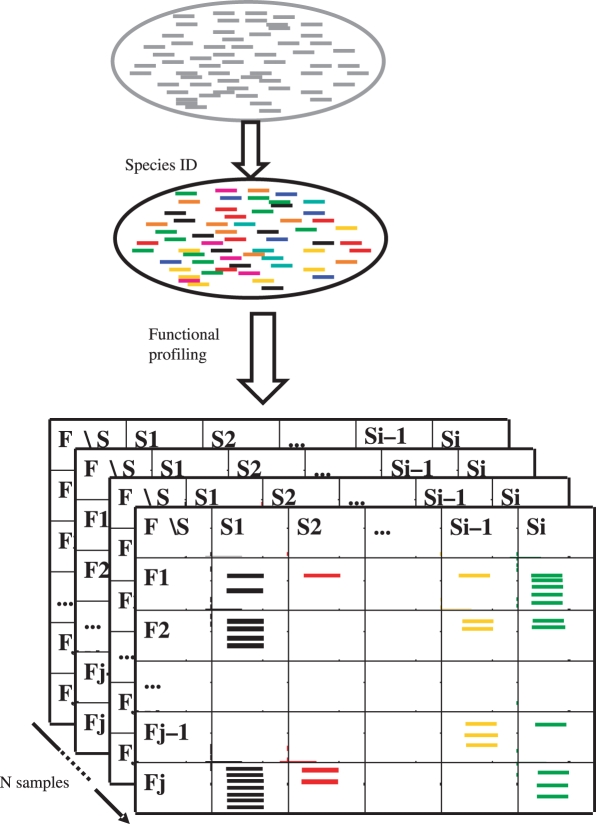Figure 3.
Spatio-temporal three-dimensional organisation of sequence-derived datasets. The set of environmental genomic, cDNA, or protein sequences (grey bars) is ascribed to a set of i Species (S), thus resulting in species-labelled sequences (colour bars). The aim of functional analysis and profiling is to ascribe species-labelled sequences to a set of j functional categories (F), thus resulting in a ‘potential function × species’ understanding of the ecosystem. The third dimension of the matrix corresponds to spatio-temporally replicated samples, such as samples subjected to various environmental constraints, or samples at different points in time. This kind of dataset can be analysed not only to understand the mechanisms induced by a forcing variable, but also to select and parameterize the components that have to be included in a model.

